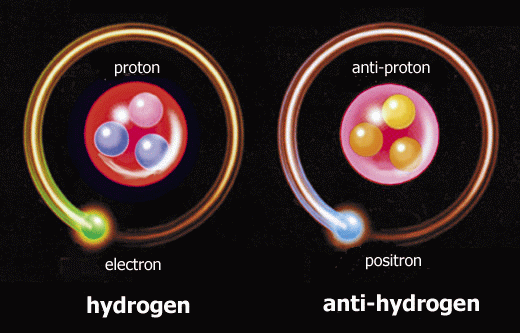''Take a gold sample the size of the head of a push pin, shoot a laser through it, and suddenly more than 100 billion particles of anti-matter appear.
The anti-matter, also known as positrons, shoots out of the target in a cone-shaped plasma “jet.”
...
“By creating this much anti-matter, we can study in more detail whether anti-matter really is just like matter, and perhaps gain more clues as to why the universe we see has more matter than anti-matter,” said Peter Beiersdorfer, a lead Livermore physicist working with Chen.
...
Laser production of anti-matter isn’t entirely new either. Livermore researchers detected anti-matter about 10 years ago in experiments on the since-decommissioned Nova “petawatt” laser – about 100 particles. But with a better target and a more sensitive detector, this year’s experiments directly detected more than 1 million particles. From that sample, the scientists infer that around 100 billion positron particles were produced in total.'' [source]
And antimatter can/will be used as fuel for new space-ship engines:
''Most self-respecting starships in science fiction stories use antimatter as fuel for a good reason – it’s the most potent fuel known. While tons of chemical fuel are needed to propel a human mission to Mars, just tens of milligrams of antimatter will do...
Another significant advantage is speed. The Reference Mission spacecraft would take astronauts to Mars in about 180 days. "Our advanced designs, like the gas core and the ablative engine concepts, could take astronauts to Mars in half that time, and perhaps even in as little as 45 days," said Kirby Meyer, an engineer with Positronics Research on the study.
Advanced engines do this by running hot, which increases their efficiency or "specific impulse" (Isp). Isp is the "miles per gallon" of rocketry: the higher the Isp, the faster you can go before you use up your fuel supply. The best chemical rockets, like NASA's Space Shuttle main engine, max out at around 450 seconds, which means a pound of fuel will produce a pound of thrust for 450 seconds. A nuclear or positron reactor can make over 900 seconds. The ablative engine, which slowly vaporizes itself to produce thrust, could go as high as 5,000 seconds.
''[source]
''So, why haven't we built a matter-antimatter reaction engine? The problem with developing antimatter propulsion is that there is a lack of antimatter existing in the universe. If there were equal amounts of matter and antimatter, we would likely see these reactions around us.
...
For now, we will have to create our own antimatter. Luckily, there is technology available to create antimatter through the use of high-energy particle colliders, also called "atom smashers."'' [source]
Wednesday, November 19, 2008
How to create A LOT of anti-matter (and how to use it)
By
at
23:01
![]()
Section: Free energy and new technologies, Space exploration
Subscribe to:
Post Comments (Atom)
No comments:
Post a Comment